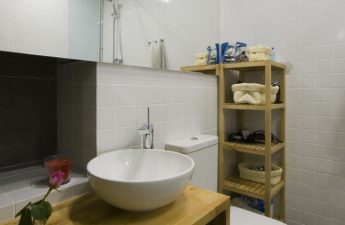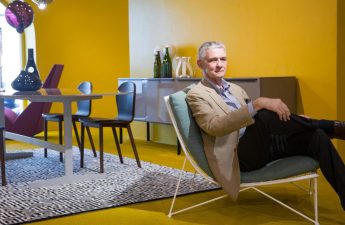How to create an interior that will not lose itsrelevance in a few years? What is the highest degree of design skill? Architect Oksana Lychagina, in whose interiors clients live happily ever after, spoke about this and much more Oksana Lychagina, architect Graduated from the urban planning faculty of the Moscow Architectural Institute. Since 1998 — head and chief architect of her own studio OLstudio. Has implemented more than 200 private and public projects, executed in completely different styles. Published in such publications as Salon, "Best Interiors", "Archidom", "Beautiful Houses" and others. In addition to interior design, she is engaged in industrial design: Oksana's sketches are used to create collections of decor for tiles, dishes, bathroom furniture and accessories. www.olstudio.ru Style — The main thing for me is light and space, even in small spaces. I have to work in both classic and modern styles, so I can’t clearly say which style or direction is closer to me. Country houses are decorated mainly in traditional and classic styles, and public spaces are modern architecture and design. When I make apartments for young people, it is also always a very modern style. Therefore, the main thing for me is the maximum feeling of volume and space, even where there is practically none. It turns out that I create an optical illusion: the room seems larger than it was with the original parameters.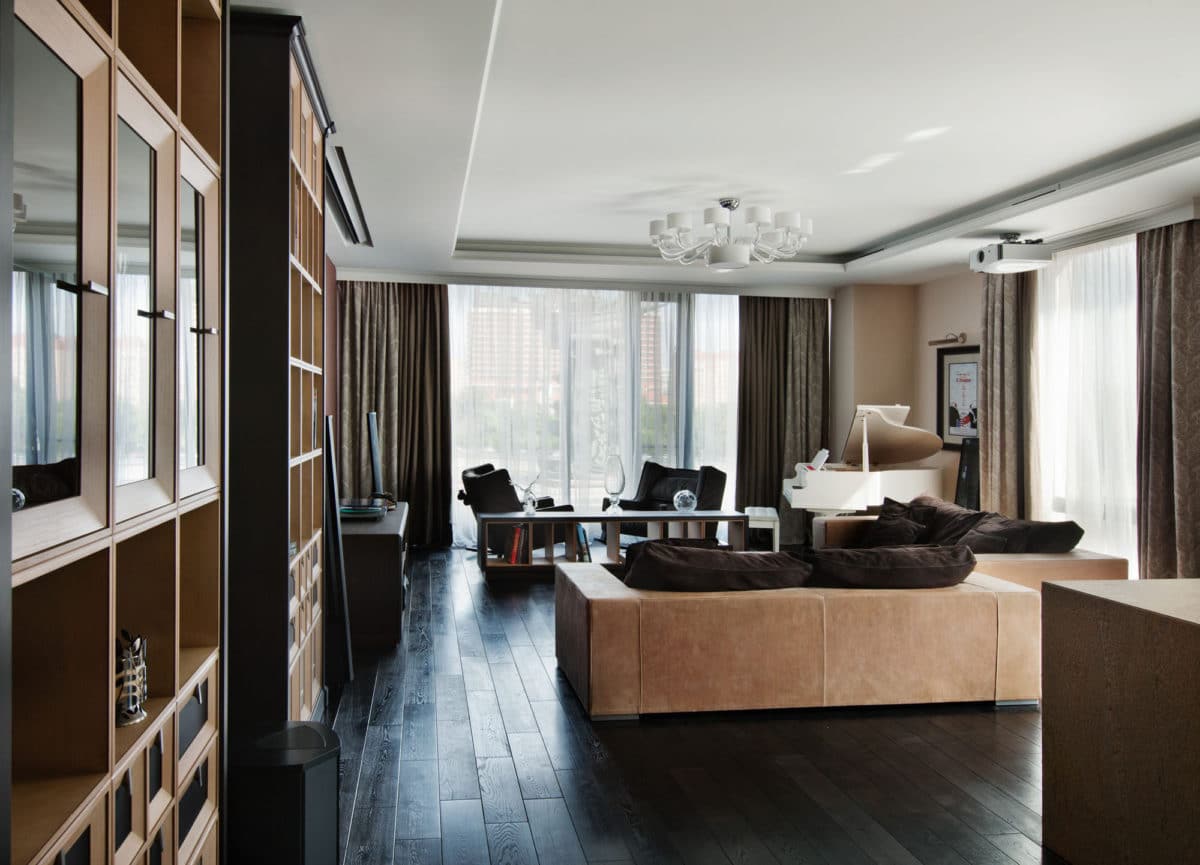 Project "Modern Chic" The coolest projectProbably the coolest project is the cottage village "Swan Lake" on Rublevo-Uspenskoe Highway. The houses there are built in the style of a Russian estate, and they are all completely different: none are repeated or similar to the other. Why "Swan Lake"? On the territory behind the lake there is a dacha of the Bolshoi Theater, so this name is a tribute from the investors. I was involved in the project of this village at all stages: from the general plan to construction, and in some houses I did the design.
Project "Modern Chic" The coolest projectProbably the coolest project is the cottage village "Swan Lake" on Rublevo-Uspenskoe Highway. The houses there are built in the style of a Russian estate, and they are all completely different: none are repeated or similar to the other. Why "Swan Lake"? On the territory behind the lake there is a dacha of the Bolshoi Theater, so this name is a tribute from the investors. I was involved in the project of this village at all stages: from the general plan to construction, and in some houses I did the design.
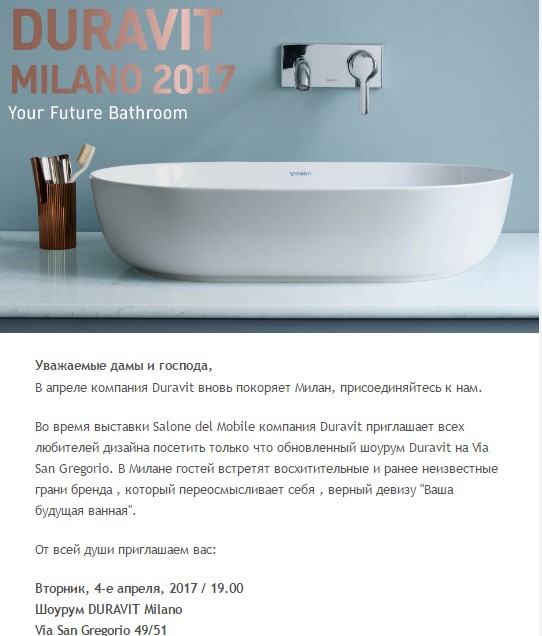
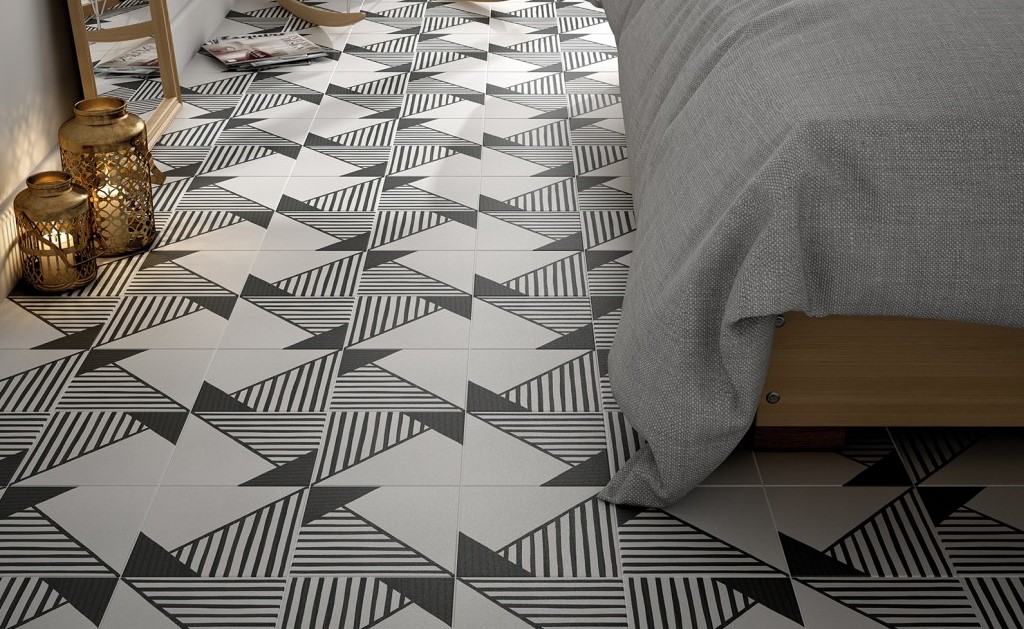
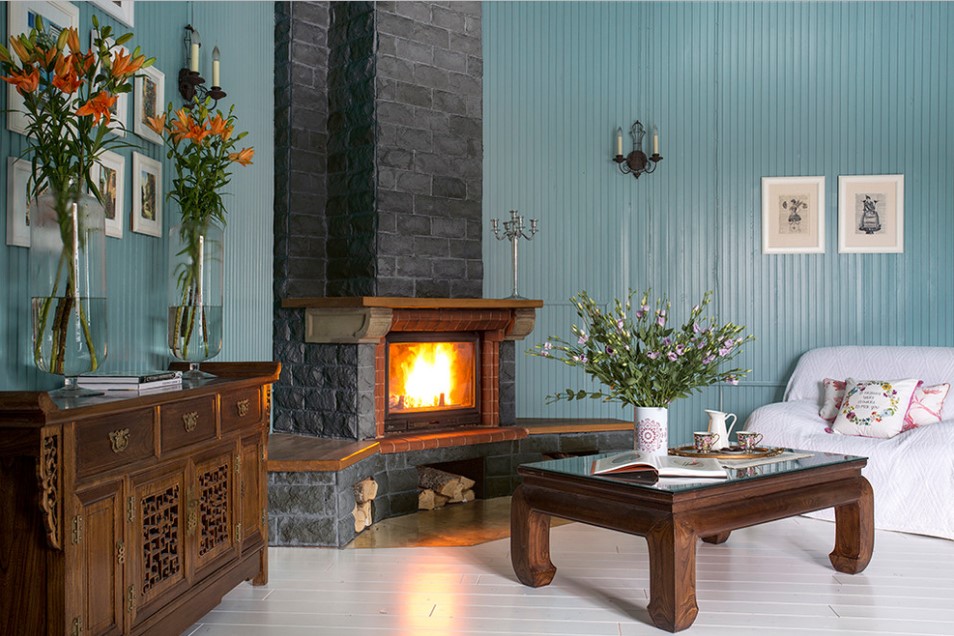 The most difficult project I think when youYou work with a person, create an interior design for them - this is a deeply personal penetration. It often happens that some projects last a very long time, and it becomes a part of your life. Even a short project lasts about six months, and there have been cases - about three years. Each time I do not just a design, but a form for a person. A house or an apartment is a form for a person and his family; a store or an office is a form for a certain type of business. It turns out that for everyone who applies for a design project, this is not just a purchase of real estate, but, in fact, a change in status: a person jumps to a new level. He spends a lot of money, thinks a lot himself, consults and chooses a lot. And it happens that someone is simply not ready to move to a new level - then the project can drag on for several years. And this is not easy.
The most difficult project I think when youYou work with a person, create an interior design for them - this is a deeply personal penetration. It often happens that some projects last a very long time, and it becomes a part of your life. Even a short project lasts about six months, and there have been cases - about three years. Each time I do not just a design, but a form for a person. A house or an apartment is a form for a person and his family; a store or an office is a form for a certain type of business. It turns out that for everyone who applies for a design project, this is not just a purchase of real estate, but, in fact, a change in status: a person jumps to a new level. He spends a lot of money, thinks a lot himself, consults and chooses a lot. And it happens that someone is simply not ready to move to a new level - then the project can drag on for several years. And this is not easy.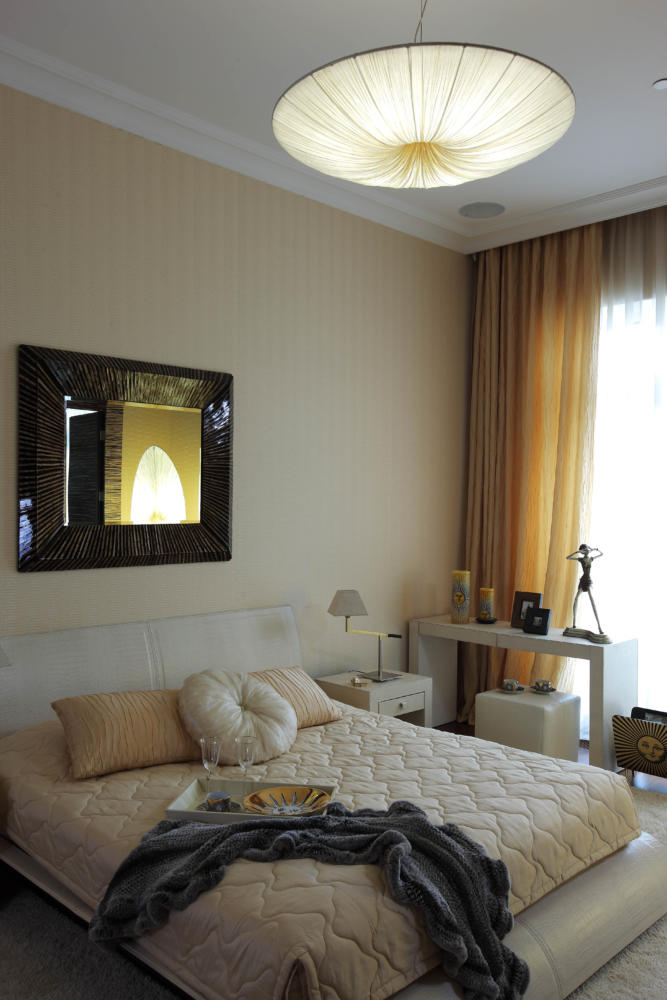
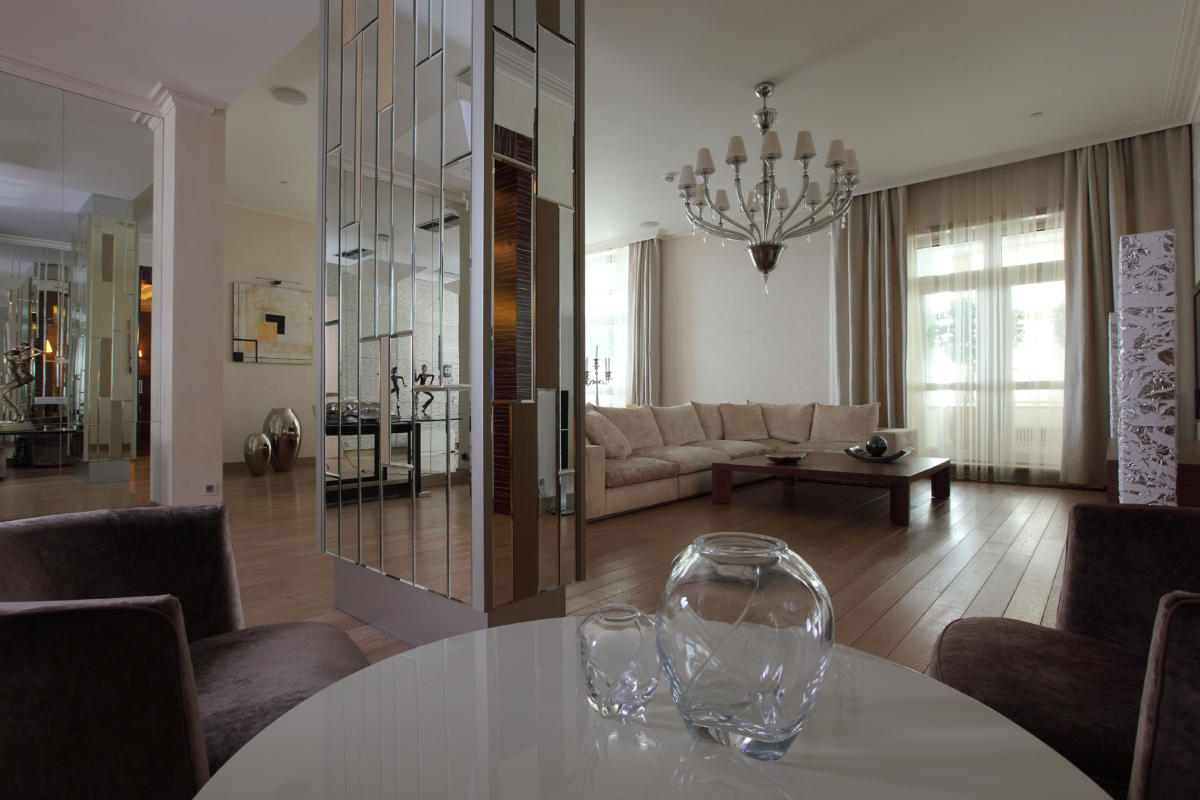
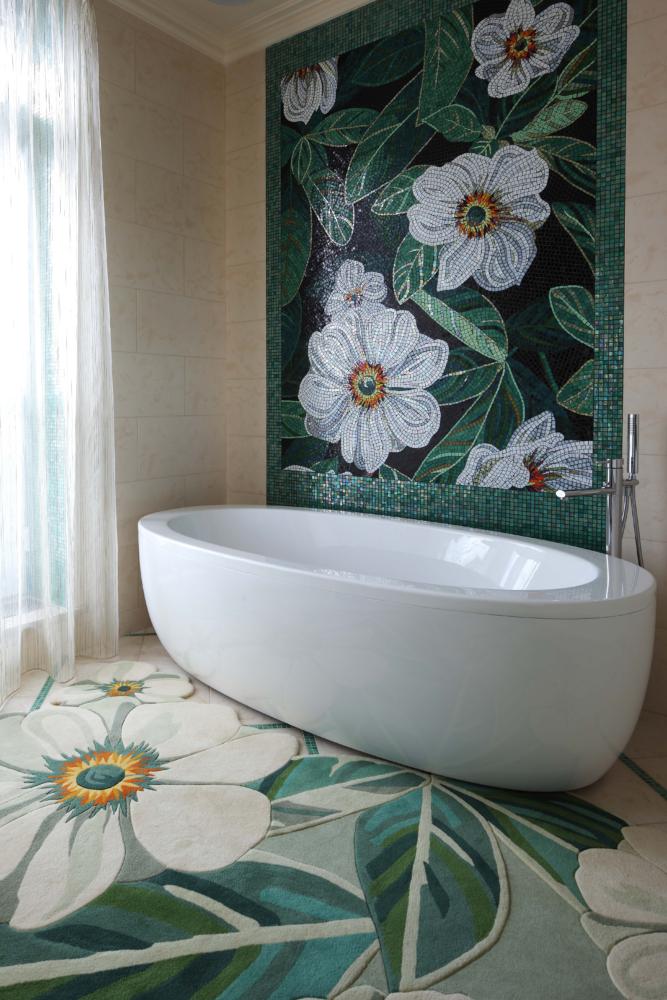
 Project "Business Lady" Twice in ownprojects, I noticed how I myself moved to a new level. One of them is an apartment on Vorobyovy Gory, the interior of which I decorated for a business lady. The client is simply an incredible woman: a perfect queen and at the same time a vamp. I was faced with the task of creating an interior that everyone who enters it would exclaim: “Wow, this is impossibly beautiful!” For me, this was very difficult, because I understood that any interior lives for a certain number of years, and the task at hand is practically impossible. But it turned out that in the end, a chic, elegant interior appeared, in which the owner of the apartment still feels comfortable: with complex textures, semicircular shapes and a fabric ceiling in the bedroom. The work was built on complete trust, and what came out in the end lifted me up in my own eyes.
Project "Business Lady" Twice in ownprojects, I noticed how I myself moved to a new level. One of them is an apartment on Vorobyovy Gory, the interior of which I decorated for a business lady. The client is simply an incredible woman: a perfect queen and at the same time a vamp. I was faced with the task of creating an interior that everyone who enters it would exclaim: “Wow, this is impossibly beautiful!” For me, this was very difficult, because I understood that any interior lives for a certain number of years, and the task at hand is practically impossible. But it turned out that in the end, a chic, elegant interior appeared, in which the owner of the apartment still feels comfortable: with complex textures, semicircular shapes and a fabric ceiling in the bedroom. The work was built on complete trust, and what came out in the end lifted me up in my own eyes.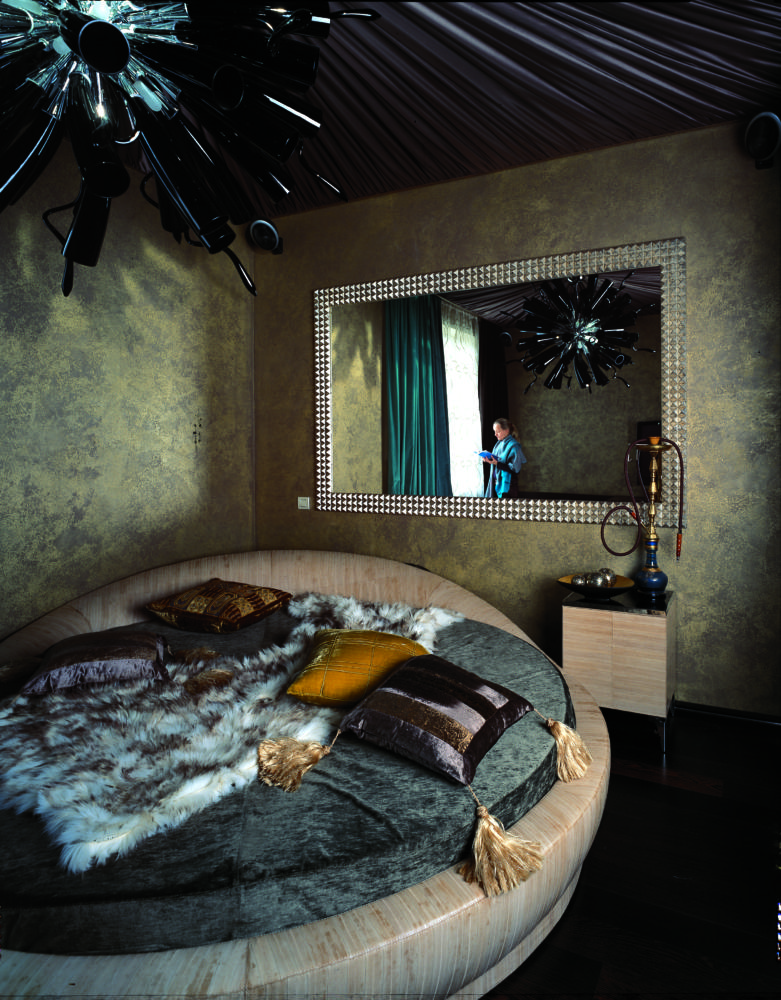

 Project "Business Lady"
Project "Business Lady"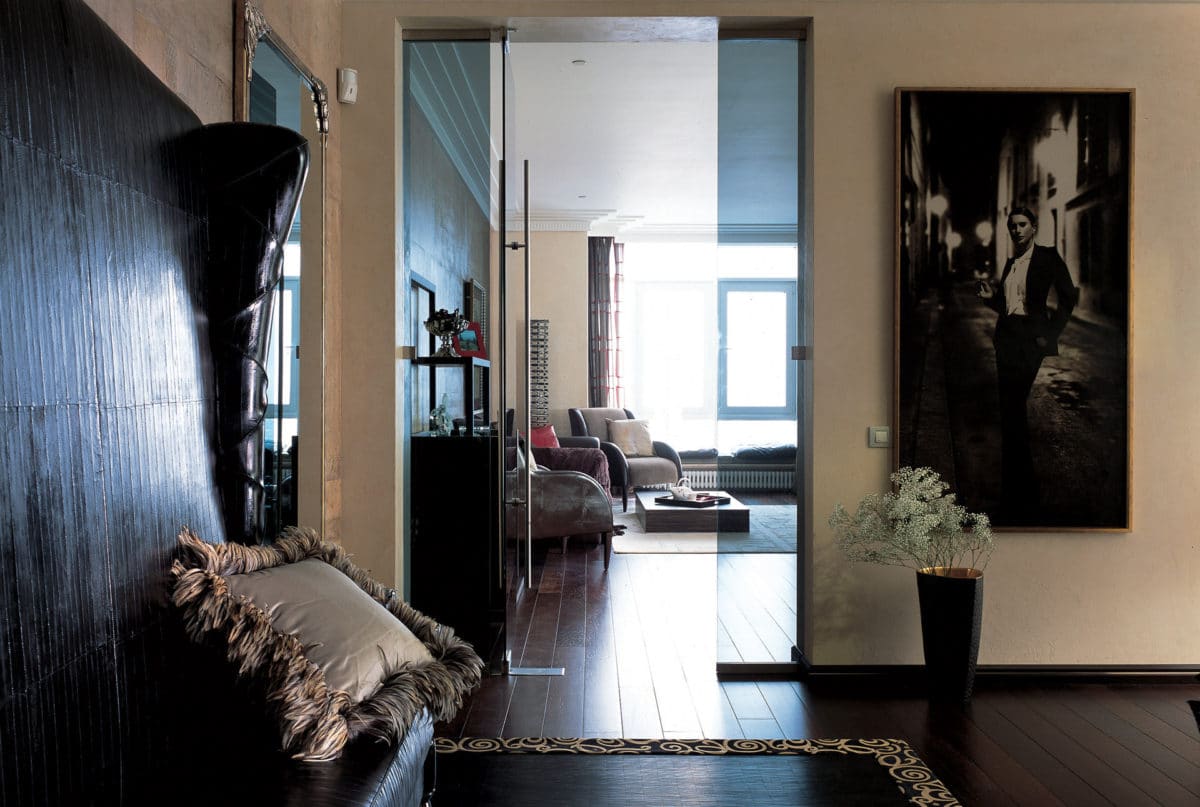 Project "Business Lady" Design of clothes and platesI started making stoles with lace because I really liked them, but they were only sold by Scervino and Valentino — and when I realized that this was a Russian theme, I started sewing myself. I went to a fabric exhibition in Paris, found manufacturers of the best fabrics and lace, and things took off. I started with shawls and scarves, and then moved on to more complex things. My philosophy is to make clothes that do not restrict movement. And I also believe that each model should have something handmade: knitting, applique. Now I am making a collection of capes with Orenburg shawls. You will be able to see it soon — I hope it will be relevant not only here, but also in Europe. As for the plates, it all happened by chance. I was developing tiles when I was asked to develop a collection of plates instead. Now I want to revive the tradition of decorating walls with plates. It's all about the theme of the circle in the interior, and it still inspires me.
Project "Business Lady" Design of clothes and platesI started making stoles with lace because I really liked them, but they were only sold by Scervino and Valentino — and when I realized that this was a Russian theme, I started sewing myself. I went to a fabric exhibition in Paris, found manufacturers of the best fabrics and lace, and things took off. I started with shawls and scarves, and then moved on to more complex things. My philosophy is to make clothes that do not restrict movement. And I also believe that each model should have something handmade: knitting, applique. Now I am making a collection of capes with Orenburg shawls. You will be able to see it soon — I hope it will be relevant not only here, but also in Europe. As for the plates, it all happened by chance. I was developing tiles when I was asked to develop a collection of plates instead. Now I want to revive the tradition of decorating walls with plates. It's all about the theme of the circle in the interior, and it still inspires me.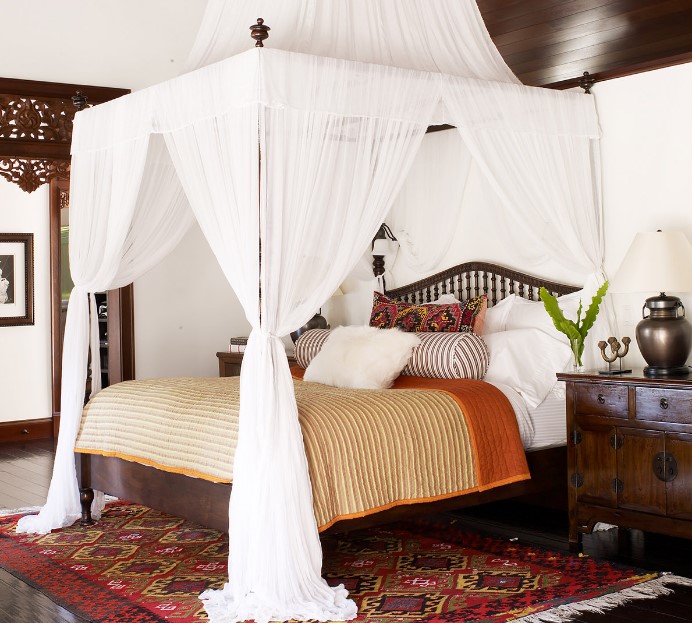
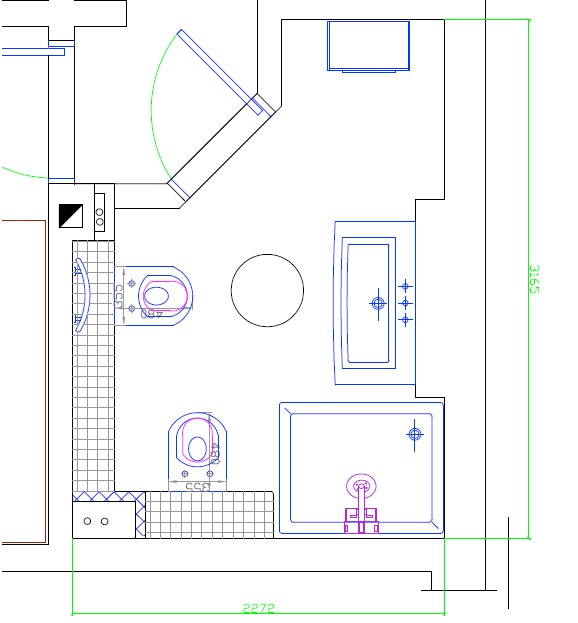
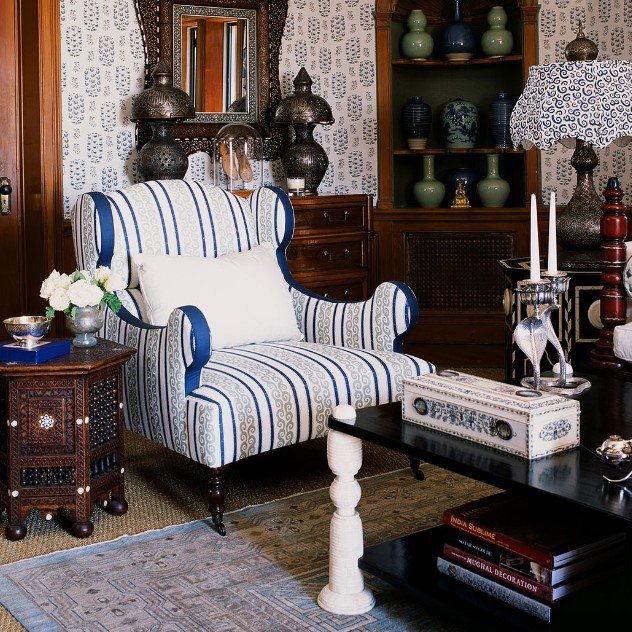
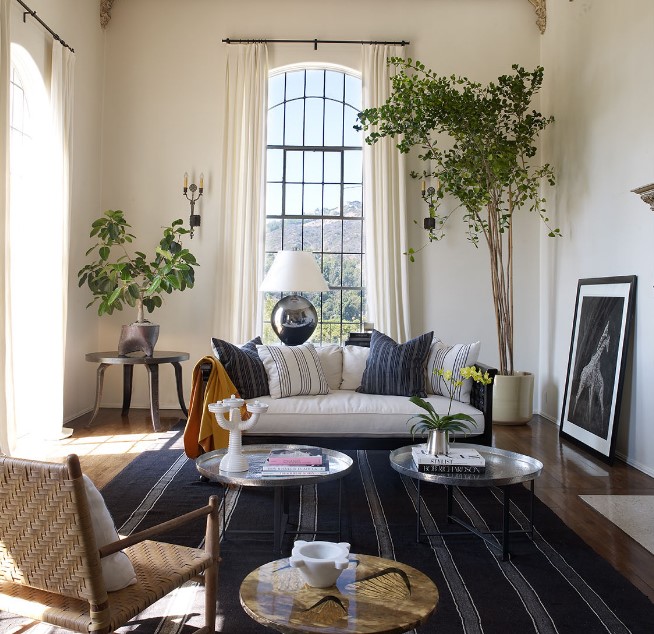
Interior design: architect Oksana Lychagina about the most important


